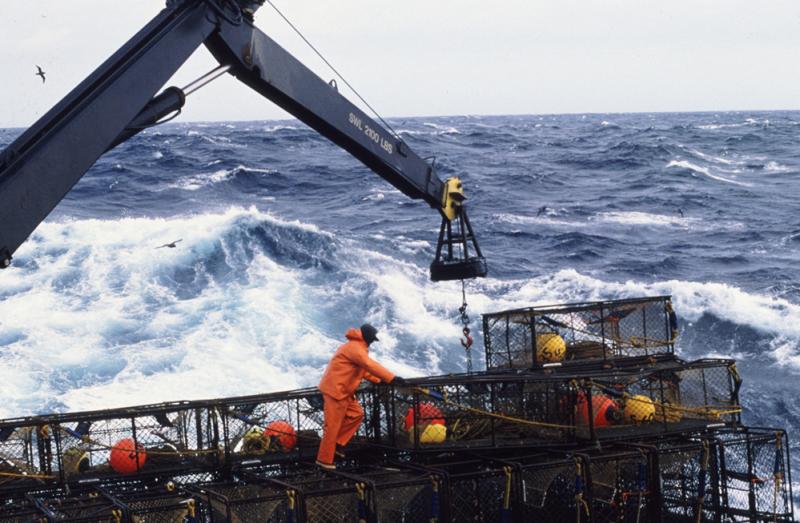- The ocean is a dynamic body of water, constantly affected by factors like tides, waves, and currents.
- Tides are the periodic rise and fall in sea level witnessed on coastlines around the world. They are caused by the gravitational forces and respective rotations of the Earth, moon and sun.
- Gravity is the force of attraction between any two objects with mass in the Universe. The greater an object’s mass and the smaller the distance between two objects, the stronger the gravitational pull exerted by these objects on one another.
- While the sun has a greater mass than the moon, the moon is much closer to the surface of the Earth than the sun, and therefore exerts a greater gravitational pull on the Earth and its oceans than the sun. Therefore, the sun’s effect on tides is less than half the moon’s effect.
- The gravitational pull from the moon tugs on the surface of the ocean, creating a bulge of water on the surface of the Earth facing the moon. You can think of the moon as a magnet and the ocean as a pile of metal beads.
- As the moon rotates around the Earth, the gravitational attraction between the two massive bodies is centered in a single location. This location depends on the mass of the moon and the Earth and the distance between them. This central point is beneath the Earth’s, on the side of the Earth closest to the moon.
- Centrifugal force is the force created by the Earth and moon (or any two objects) whirling around this central point. The force is always outward; away from the bodies whose gravitational attraction is causing it.
- In the case of the Earth and the moon, centrifugal force pushes away from the moon and causes ocean water to pile up on the side of the Earth opposite the moon.
- Therefore, at any given moment, water on the Earth’s surface is bulging in two locations: (1) on the side of Earth closest to the moon, caused by the force of the moon pulling the water, and (2) on the side opposite the moon, caused by the centrifugal force pushing water away from the moon.
- Throughout the day, as the Earth spins on its axis, it passes through these bulges of water, creating high tides where the bulges are present, and low tides where the bulges are absent.
- In most places in the world, the rotation of the Earth through the bulges results in two high tides and two low tides every day. These twice daily tides are semidiurnal tides.
- In some parts of the world, the shape of the coast line and surrounding bodies of water interact with the tidal cycles in such a way that only one high tide and one low tide per day are observed. In these areas, the once daily tides are called diurnal.
- The vertical distance between the high and low tide in any given location each day is called the tidal range.
- While the sun’s effect on tides is minimal, the sun can influence the strength of the forces exerted by the moon on the Earth, and can therefore affect the severity of the tides. Twice a month, when the sun and moon are aligned with the Earth, their gravitational forces add up to create larger water bulges. This increase leads to higher high tides and lower low tides. These extreme tides are called spring tides, and they usually occur during the full and new moon.
- When the sun and moon are at a right angle from one another with respect to the Earth, their forces oppose one another, reducing the effect of the moon on the tides. As a result, the tidal range is diminished. These diminished tides are called neap tides.
- Most coastal areas experience two high tides and two low tides each day in the following pattern:
- Sea level rises over several hours, covering the intertidal zone (the area exposed to air during low tide and covered with water during high tide). This is called the flood tide.
- Sea level peaks at high tide.
- Sea level falls over several hours, uncovering the intertidal zone. This is called the ebb tide.
- Sea level reaches its lowest point at low tide.
- Process repeats.
- The movement of water during flood tides and ebb tides creates tidal currents. Slack tide occurs in the absence of tidal current, at high tide and low tide when currents switch between ebb and flow.
- Scientists can predict tides far into the future based on the cyclical patterns of the moon and the Earth’s rotation.
- It is important for fishermen, captains, and other watermen to understand tides and tidal currents in order to navigate their boats safely.

It is important for commercial fishermen to understand tides so that they are able to navigate coastal waters safely.
- Tides are ecologically important because they help circulate important nutrients throughout the water.
- Tides help many marine organisms survive by moving animals into suitable environments as their habitat needs change. For example, many animals must move from the shallow estuaries they inhabit as larva into the open ocean for adulthood. In additional, tidal currents help animals reproduce by moving eggs and sperm released into the water toward one another for fertilization.
Podcast: Explain-it: How do tides work?
Review Questions
What is a tide?
Explain gravity and how the moon is more influential than the sun in causing tides.
What is a tidal range? Is the tidal range larger or smaller during a spring tide?
Glossary
Centrifugal Force: A force that causes something to move away from the center
Diurnal Tide: A tide pattern characterized by one high tide and one low tide in a day
Ebb Tide: The time during which sea level falls over several hours in transition from high tide to low tide
Flood Tide: The time during which sea level rises over several hours in transition from low tide to high tide
Gravity: The force of attraction between all objects with mass in the universe
Neap Tide: A tide with very small tidal range
Semidiurnal Tide: A tide pattern characterized by two high tides and two low tides in a day
Slack Tide: The occurrence of still water between high and low tide
Spring Tide: A tide with very large tidal range; this occurs during new and full moon phases
Tide: The rise and fall in sea level caused by the gravitational forces of the moon and sun in combination with the rotation of the Earth
Tidal Currents: The movement of water caused by the changing of tides
Tidal Range: The vertical distance between the high and low tide each cycle





